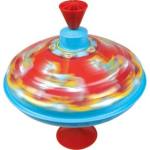
Well folks, April is finally here – the sun is shining and flowers are blooming, Spring is definitely in the air – and of course begins the Health Activist Writer’s Month Challenge courtesy of WEGO Health. A challenge in which I have to write a post for every day in April – being provided with prompts that I have to write about.
Today’s prompt says the following:
Pretend you’re making a time capsule of you and your health focus that won’t be opened until 2112. What’s in it? What would people think of it when they found it.
Okay, so first thing, according to Wikipedia, a time capsule is defined as:
“…a historic cache of goods or information, usually intended as a method of communication with future people…”
Sounds easy, right? However, I have had some difficulty – as my condition is not common and seems to be rare, especially as I have come across very little information regarding it and have not found anyone else living with the same condition as me. Although I take several different medications, none of which really treat my condition or its symptoms, they merely ease the severity of the symptoms.
So, to start I have decided to place a letter intended for whoever happens to find the capsule – a letter introducing myself, about my life, hobbies, interests, and of course, about my condition – the medical jargon, the symptoms and how it affects me and my daily life. Perhaps, also including transcripts of my blog posts to gain extra insight into my condition. My journal would also be a great tool to learn more about me and my condition, one which fully dictates everything I go through day in and day out, as well as thoughts and feelings, pretty much everything about me!!
Also, have included two letters – a referral letter and the other the first appointment to see a hospital consultant. You may be wondering why, but I think it would be interesting as part of social history to compare the waiting lists from the past and the present. What would the people living 2112 think of our waiting times to see a consultant? Would they be shocked at how long they are? This is also of some interest for people living in the UK considering the recent discussions into the reforms of the NHS. Whether the reforms will make any difference to the length of waiting times remains to be seen.
I have also included a visual aid to represent one of the main symptoms that I experience – dizziness. And I have represented the dizziness by placing a spinning top into the time capsule.

Perhaps when the person who opens the time capsule will get dizzy when looking at the toy spin round and round. Maybe then they will be able to appreciate what it is like to live with it 24/7 like myself.
I have placed my degree certificate and transcripts in there – to show that even when living with an invisible and life long condition, it does not have to stop you from achieving something great.
My crutch is something else that is going in. A mobility aid that helps me in my daily life, as my legs are weak and have trouble with balance, it helps (or at least tries to!) maintain my balance and so I don’t fall!!
Another problematic symptom that I experience is due to the spastic paraparesis, causing stiffness, heaviness and tingling sensations in my legs, and of course weakness which often leads to my legs giving way on me. However, this is obviously a symptom which nobody can see, so it lead me to ask how I would represent this in my tine capsule? Then I remembered, a nickname that I was given a while ago – Bambi!! Yes, I have been given a nickname based on the Disney who at the beginning on the film is unable to stand on his legs, falling over as he tries to – not unlike me when my legs are weak and they collapse from under me. So I have placed a cute cuddly toy of Bambi to represent the spastic paraparesis.

And I have also included a butterfly – something that I love to represent me. Love the symbolism of them – that they are free beings, able to go here and there, something that I wish I could do. And of course, they start off as something else and transform into something beautiful. Perhaps, that is what happens when we become ill – that we transform into a better version of ourselves.

So, that is my time capsule!! I think that when someone in 2112 will open this, they will probably be very baffled!! Although, for many years I think I have baffled many doctors as getting a final diagnosis was quite a battle.
Where would I hide the time capsule? Well, it would probably hide it in the vast field near my house – it would be nice that somebody who in the future who’s living in the street where I am now would find it. Can’t imagine that it would end up in a museum or anything, but even if it’s just to educate someone about the complexities of the brain, and the problems associated with neurological conditions, and those conditions which cannot be seen.
Hope you have enjoyed the first post and would love to hear any responses and thoughts you may have, don’t hesitate to comment.
What would you place in your time capsule??









